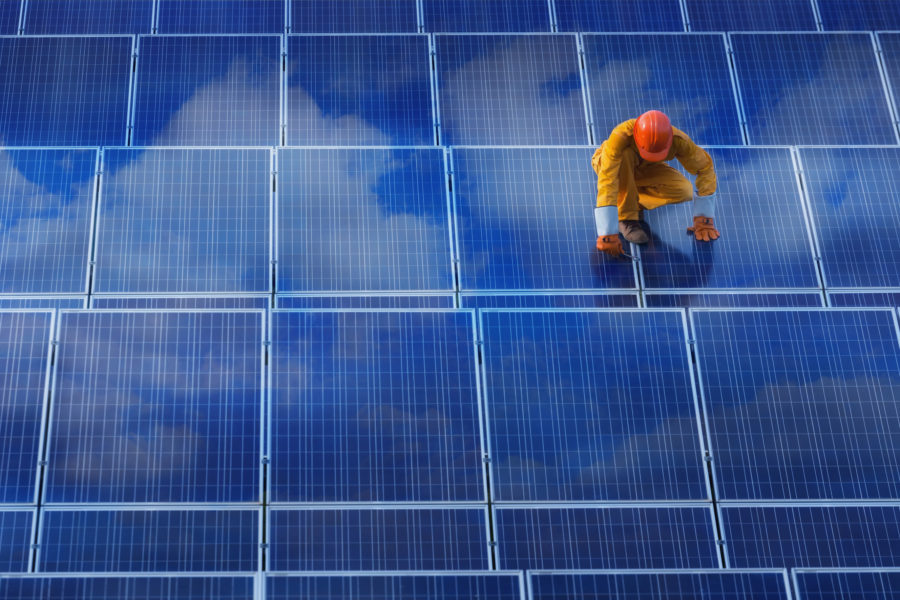The possibilities of using solar power on an industrial scale in Finland focus on large enterprises generating electricity for their own consumption. At present, Finland’s largest solar power plants are fairly small by international comparison, mainly consisting of projects constructed to meet the needs of specific properties or companies.
A project to expand Finland’s largest solar park in Nurmo has sparked interest in industrial-scale solar power as part of the national energy debate, as Atria, a company in the meat and food sector, is a pioneer in the industrial deployment of solar power.
The solar power plant near the company’s factory in Nurmo was commissioned in 2018 and consists of about 22,000 solar panels installed on the ground and on rooftops. The panels generate approximately 5,000 megawatt hours of power annually, and the new expansion, which will be commissioned in 2022, will increase Atria’s annual solar power output to over 9,000 megawatt hours.
Modelling provides predictability
Herman Böök considers the modelling of solar power generation and the related applications under Finnish conditions in his doctoral dissertation, Photovoltaic Output Modeling: Monitoring, Forecasting, and Applications.
“The daily and seasonal variation in solar power imposes certain constraints and, in the long term, somewhat complicates the large-scale exploitation of solar power for electricity generation in Finland,” he states in his dissertation.
Böök’s dissertation studies topics such as the use of modelling in building automation, profitability calculations for small-scale solar power generation, and virtual power plant trials using demand-side management in future electricity markets.
The generation of electricity is dependent on the weather, so weather parameters are at the heart of the model, with the most important being the amount of solar radiation and the air temperature. If necessary, it is possible to use ground-level observations, satellite data, or numerical weather forecasts as weather inputs.
“Satellite data is most suitable for producing forecasts for the coming few hours, after which numerical weather forecasting models step in. The general generation potential of solar power can be mapped, for example, using long series of ground-level or satellite observations,” Böök says.

Marja Kaitaniemi, Director of IBV Suomi, the Finnish office of the German group of companies Ib vogt, also says that forecasts focus on satellite data during the development phase of solar power projects. Modelling based on weather forecasts is becoming increasingly important as growth continues.
“I do not see any obstacles to the growth of solar power in Finland. For example, IBV Suomi is currently preparing a new solar energy generation area in Uusikaupunki. This will be a 200-megawatt project to the east of Kalanti, where there is a strong electricity network and a good amount of solar radiation,” Kaitaniemi says.
Competitiveness in order
Fortum began operating in India in 2012 and has focused on solar energy there from the outset. The first solar power plant project was in the five-megawatt region. Pavagada 2 and Jaisalmer, which were completed in 2019 and 2021, are much bigger power plants, outputting more than 300 megawatts.
“To date, Fortum has had five solar power projects in India with a total output of about a thousand megawatts. Growth is underpinned by the good solar conditions and favourable trends in generation costs in the Indian market throughout the plants’ life cycles,” says Mikko Iso-Tryykäri, Vice President of Wind and Solar Development at Fortum.
Fortum’s experiences with industrial-scale solar power are based on the latest technology and the management of large supply chains. For example, when solar panels are bought in large batches, the price is much lower.
The lessons learned internationally can also be applied in Finland, but the key is to ensure that solar power is competitive.
“It is hard to predict how solar power will develop, as technologies sometimes advance more quickly than expected. In Finland, the peak load operation hours of solar power consumption are just a third of the peak load operation hours of wind power, but the two forms could be mutually complementary in electricity networks,” Iso-Tryykäri says.
Marja Kaitaniemi emphasises that the companies already working on solar power projects are well-positioned to drive the developing market forward.
“In our experience, Finnish landowners are interested in solar power projects, and municipalities and authorities take a positive approach. It has also been easy and efficient to work with Fingrid.”






